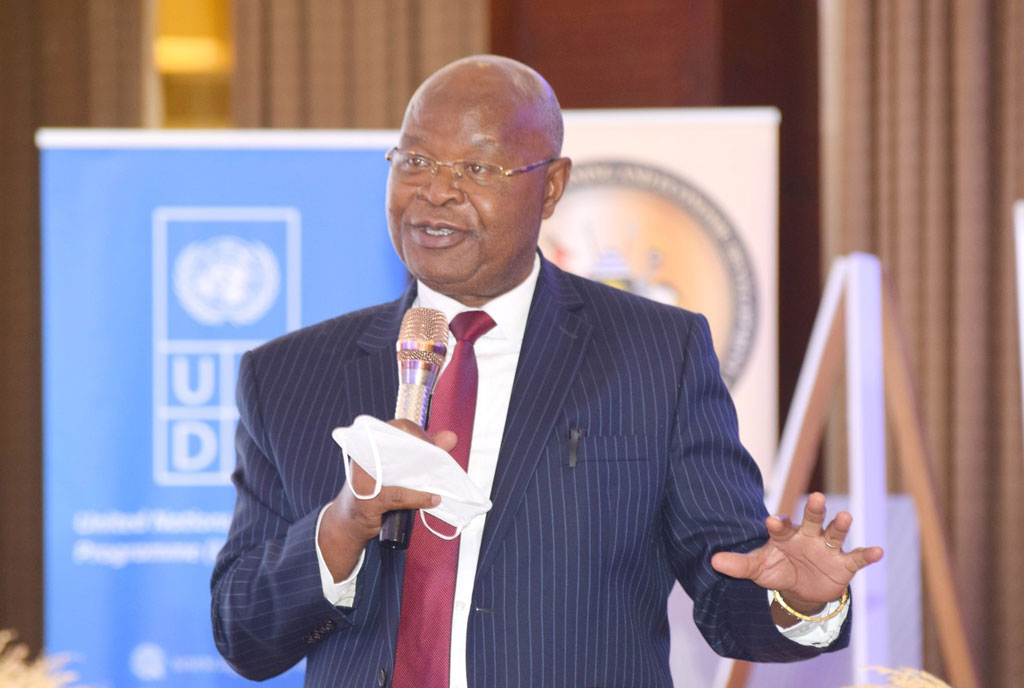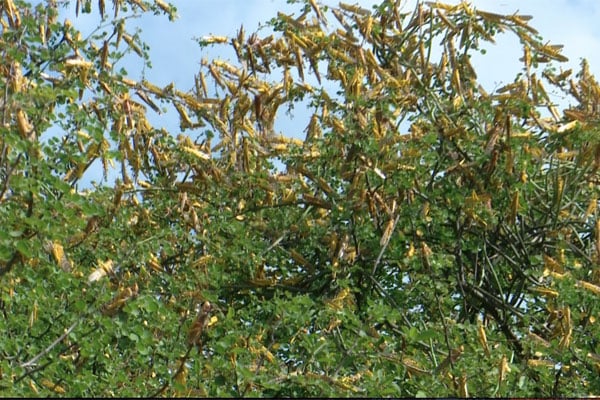Involve us in locust response, experts tell government

Trapped. A UPDF officer holds locusts in Katakwi District yesterday. Photo by Leonard Mukooli
What you need to know:
- Mr Aggrey Bagiire, the State Minister for Agriculture, said throughout the response processes, experts and scientists were at the forefront of designing the control measures.
- Mr Pius Wakabi Kasajja, the Permanent Secretary of the Ministry of Agriculture, said out of the Shs15b received, Shs11.1b was sent to Desert Locust Control Organisation of East Africa, Shs3.6b was spent on aircraft and Shs300m spent on UPDF operations.
The country representative of Desert Locust Control Organisation of East Africa (DLCO-EA), Mr Evarist Magara, has said the deployment of soldiers and the rush to start mass spraying of locusts was uncalled for and has undermined the input of experts.
“Previously, everybody was shouting that let us go and spray the locusts but when they reached here, they realised these were mature locusts that do not cause any damage,” Mr Magara said, adding that the locusts were too few to attract such a humongous response requiring billions of shillings.
He said the initial response processes ignored the importance of expert scientists but lessons are being learned.
“Soldiers attempted to spray at around 11am but the insects were running away, five-metres [ahead] after sensing them. You cannot mix science with [military],” Mr Magara said.
He, however, said the work relationship between soldiers and science experts is improving during the field response processes.
“We have coached the military that if they want to kill these insects, they have to go early morning or late in the evening. If you wake up early in the morning, you can spray them, it can be done in the morning 7am to 9am or in the evening around 5pm to 7pm,” he said.
“The real work will start around 10 to 14 days when the eggs locusts laid start hatching. The young locusts are red-pink in colour and they are the most destructive,” Mr Magara said.
READ:
He said DLCO-EA was working with Ministry of Agriculture to train and bring professionals to tackle the pests.
“We are training people in Moroto, we have people from northern and eastern regions where locusts were expected. We want to bring the core team, people who are learned and know science but were not exposed to the locust problem,” Mr Magara added.
Prof Ogenga Latigo, an expert in insect sciences and Agago North MP, also concurred on the role of scientists and experts.
“The locust issue has not been well handled with the scientific leadership that ought to define the best way forward,” Prof Latigo said.
He said government should have brought together the best scientists holding diverse knowledge on locusts to make the appropriate analysis of the problem.
“Appropriate experts in monitoring, situation analysis, procurement, transportation, deployment, monitoring and critical communication channels were supposed to be put in place,” Prof Latigo said.
“Desert locusts are best controlled in their breeding sites,” he added.
The MP said the insects breed in deserts and very sandy soils where they can easily penetrate and quickly lay their eggs before they are eaten by predators.
“That is why I am not surprised that some swarms reportedly turned back towards Karamoja after spreading to other areas,” he said.
READ:
However, Mr Aggrey Bagiire, the State Minister for Agriculture, said throughout the response processes, experts and scientists were at the forefront of designing the control measures. “The head of the response team, Mr Stephen Byantwale, is an expert in entomology,” Mr Bagiire said.
Entomology is the study of insects.
Mr Vincent Ssempijja, the Minister of Agriculture, defended the deployment of soldiers, saying government was using the military to provide manpower, which is a critical factor that is lacking in the response process.
“Imagine two square miles of swarms, can you handle with 20 people? What is wrong with our people?” he asked.
“We are going to use even the citizens 10 times the number of soldiers deployed on the ground,” Mr Ssempijja added.
How shs22b will be spent
Mr Pius Wakabi Kasajja, the Permanent Secretary of the Ministry of Agriculture, said out of the Shs15b received, Shs11.1b was sent to Desert Locust Control Organisation of East Africa, Shs3.6b was spent on aircraft and Shs300m spent on UPDF operations. He said the ministry also got an additional Shs7b from government. The money will be used for procuring chemicals, logistics, protective gear, spray pumps and surveillance.




